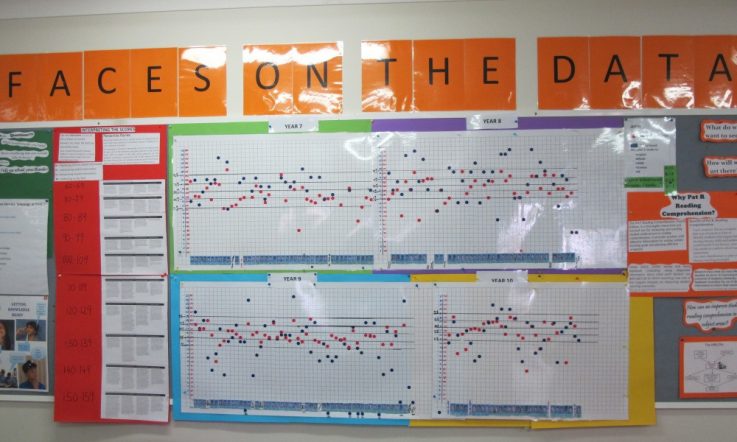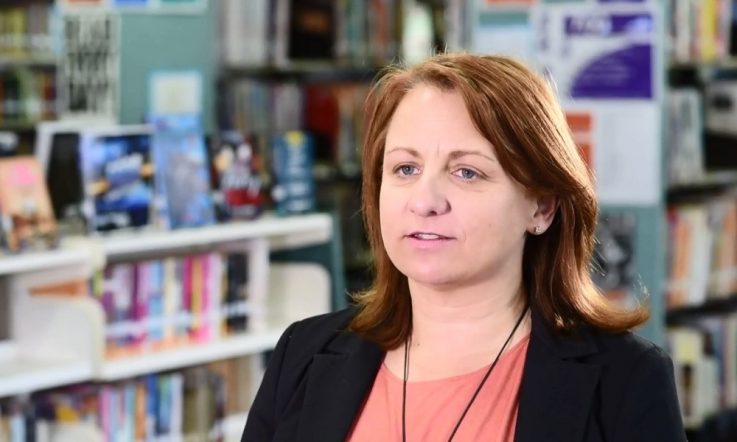Thanks for downloading this episode in our School Improvement podcast series, brought to you by Teacher magazine. I'm Rebecca Vukovic.
My guest today is Cath Apanah, Acting Assistant Principal and Head of senior school at Montrose Bay High in Hobart, Tasmania. She joins me today to discuss how her school has been using data to inform their strategic plan, the process they undertook to improve student writing and how they went about upskilling staff to use data effectively. By using data, the staff at Montrose have not only been able to track student strengths and weaknesses, but it has also become a powerful tool for teachers to better understand their impact on student learning.
Rebecca Vukovic: Cath Apanah, thanks for joining Teacher magazine.
Cath Apanah: You're welcome, thanks for having me.
RV: No worries. So just to start off, I was hoping you could share with me a little bit more about your school's context, so some of the key challenges that you face.
CA: Okay, so we're a low-SES (socioeconomic status) government co-ed high school in Hobart, Tasmania. About 63 per cent of our students are in the bottom quartile [for SES] and a lot of our challenges are challenges particular to that sort of demographic – so poverty, low literacy, unemployment, trauma, family violence – and so the challenges for us are often around finding ways to engage our students and to build their confidence and capacity at school.
RV: And of course we're here today to talk about how you and your staff have been using data to inform your school's strategic plan. But I was wondering, before you started using this data, what were you using to inform the school's strategic plan?
CA: Look we were absolutely using data before, the problem was there was too much and we weren't necessarily getting any traction with the data we were using. We weren't using it in a smart or cohesive planned-for way. So, what we needed to do was work out which set to use, which one would be the most useful or give us the most leverage and then filter it to work out how we would present it to staff so that it would actually be used rather than just sitting in a pile on a desk. So we went through that process of filtering down and that's how we ended up determining that our literacy data, and particularly around writing, would probably be the focus for us.
RV: Could you tell me a little bit more about that – so about the actual process that you undertook?
CA: Sure. So, first we undertook some learning. For ourselves as senior staff we wanted to know what would fit best, because in our context and with our staff we know also that it needs to be best practice rather than just a full experiment. We have too much riding on it, so we undertook some learning and that's how we worked out that actually writing, and in particular using the NAPLAN data would be the most useful.
We then decided to invest time, we took a small group trial to double check that it would work in our context and to work out, through reflection and refining, how it might work best. And we learned a lot through that process.
We then developed a cohesive whole school plan to upskill our staff in the teaching and learning processes and the structure that ensured it was all working well, and for us that was some larger whole school structures around formative assessment, as well as constructing ‘power standards' for our learning areas.
So there was some larger structures and processes that sat before we could actually get into the literacy and the NAPLAN data.
Once we got those things in place, we knew we were ready for the next bit and that was actually to get into that NAPLAN data and we really narrowed into that writing focus. We did some whole school sample work and some pilot studies and, in a nutshell, our kids weren't writing enough – which meant that our teachers weren't planning enough low stakes writing for opportunities for them to actually develop their skills.
So we set goals and targets, we developed a cohesive whole school plan and then we systematically went about building the capacity of staff to embed more writing activities in their classes. Our focus was on building or increasing the quantity of writing before we could refine the quality. And we made sure we measured along the way, so we kept it accountable – checking that we were actually on target, checking that our teachers were doing what we wanted them to do, that they were confident and happy with how they were going. So it wasn't just an exercise of ‘oh let's just go ahead and do it'. We had some checks and balances in place.
RV: And one of the really interesting things I took out of what you just said then was the upskilling of staff. So could you tell me a little bit more about what went into training teachers to be able to use the data?
CA: Good question. We made sure there was a whole school cohesive approach. We undertook that process and that thought that we're all teachers of literacy and if it's just happening in the English class then we won't actually get the shift that we need for our students. We wouldn't have the leverage and impact. So, we really went about it in that mindset and that cultural change.
We specifically developed a plan throughout the year, so we planned it. We got together as a planning team and devised which strategies might work and we conducted professional learning for our teams – from learning the theory, to practising, modelling and being with teachers in the classroom – and then taking some survey data around confidence and how they felt and checking which strategies worked best and were being most used.
We did sharing professional learning, where staff would bring successes and show how they'd adopted and adapted the strategy and made it work for their learning area. So, upskilling was a very hands-on but coordinated approach for us.
RV: And I also understand that one of your colleagues read Patrick Griffin's book, Assessment for Teaching, and was introduced to Guttman analysis. I was hoping you could explain to listeners who perhaps aren't familiar with this technique, what it is?
CA: So I've said ‘Guttman' an awful lot over the last 12 months and it sounds like a funny word but my colleague Stuart Lord, who is now at a different school, he read this book and thought this might be an interesting process for us.
What we were looking for was a ‘one-sheet' where we could have a visible set of data for teachers. We knew that NAPLAN writing was what we wanted but the formats they're presented to us aren't used or useful by and for teachers. So we wanted to develop that visible data tool and from reading Patrick Griffins' book, the Guttman analysis seemed to be the thing that would work for us. It's essentially an Excel spreadsheet which plots students along one axis and a continuum along another and in our case we used the NAPLAN writing continuum.
There's plenty of YouTube clips on how to do it and that's how we learned. Once you sort the data on both axes, it creates this beautiful chart that groups what students can do and what they can't do and we always add ‘what they can't do yet'. And in that dotted space in the middle is what we call the zone of proximal development, or the ZPD. That shows the line between ‘can' and ‘can't yet' and it literally plots the next step for each student so we found it incredibly useful and it was used by teachers because all they had to do was follow the student along their line, when the colour changed from green to white, they could check on that point, refer back to the NAPLAN writing guide and work out ‘what is the next focus for that student?' And it went from ‘Oh I reckon their next step is paragraphing' to ‘I know' and ‘this is actually the next step for them'.
RV: And since you began using data to improve writing, how have you actually measured the impact it has had on teaching and learning?
CA: So across the school year our writing more than doubled – the amount of original writing. Our target that we set for ourselves was to double our word count from 29 to 58 original writing words in a lesson. So 29 was our starting point which is about a paragraph, it's incredibly low really.
So within the year or one term, we had actually doubled that, we'd reached the doubling. And by the end of the year we'd reached up to 70 words on average across the school in a lesson, which was a significant shift and showed that upskilling the staff created awareness and skill in being able to plan for those lessons.
Not only has the amount of words increased, but actually our English data has trended up for the first time last year on a cohort to cohort basis. And our staff, through surveys, have reported they feel more confident in their capacity to be planning and including literacy in their classrooms, which is a significant outcome as well. And so we've had positive outcomes for both staff and students, which has been really significant for us.
RV: It's clear your school has shown a lot of improvement so far, but I was wondering, what's your next step or what's the plan from now on?
CA: Well we're always looking to reflect, refine and grow, and for us I guess we're looking to shift in our literacy journey. We're shifting from just having a focus on quantity to quality and how we might do that. We're always asking ourselves the question, ‘how do we know?' and collecting data and holding ourselves accountable for that impact that we're having. So our next step is definitely to look at refining the quality of student work.
RV: Fantastic, well Cath Apanah thanks for sharing your insights with Teacher magazine.
CA: You're welcome, thanks for having me.
To keep listening or to download all of our podcasts for free, visit acer.ac/teacheritunes or www.soundcloud.com/teacher-ACER. To access the latest articles, videos and infographics from Teacher visit www.teachermagazine.com.au
As an educator, how are you using data to inform your own practice? Do you know where students are in their learning and what the next steps are?
As a school leader, how are you upskilling your staff to use data effectively in their lessons? What impact has this had on teaching and learning? How do you know?



